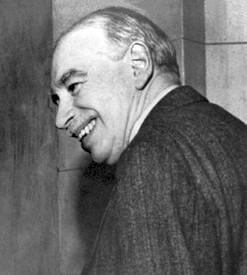At SmartCapitalMind, we're committed to delivering accurate, trustworthy information. Our expert-authored content is rigorously fact-checked and sourced from credible authorities. Discover how we uphold the highest standards in providing you with reliable knowledge.
What is the Quantity Theory of Money?
The quantity theory of money states that inflation rises in an economy when the total amount of money rises. This inflation theory attempts to assign actual value to money and explain why the price of items rises when the items physically stay the same, such as a gallon (3.8 liters) of milk, for example. This theory has been around for centuries and has endured a tumultuous history among economists. Many see this as a simple solution to this question, but many others criticize the theory.
The quantity theory of money was believed to have originated during the 16th century. This was a direct response to the rise in prices because of the influx of gold and silver from the Americas in Europe. In the early 1800s, economist Henry Thorton created what has been viewed as the definitive statement about monetary economics. His theory basically stated that the more money that enters an economy, the higher the inflation, and that the increased money supply does not necessarily lead to an increased economic output.

As far as economic theories go, the quantity theory of money is one of the simplest to understand. An example of it would be that when the amount of money in an economy doubles, the prices eventually double. This is explained because as more and more money is fed into an economy, it becomes far less rare, so it loses its initial value. So, in most economies, this produces a cycle, because the goal is to add income into the system, but in doing so, the value of the money decreases, creating a greater need for income, and so on.

The quantity theory of money has been explained by utilizing a simple equation that can be applied to many different economies. The mathematical formula M*V = P*T is accepted as the basic equation of how a money supply relates to monetary inflation. The letter M stands for money; the V stands for velocity, or the number of times money exchanges hands; the P stands for the average price level; and the T stands for the volume of transactions.
This economic theory has many followers who agree that this simple solution is accurate, but since Thorton made his ideas public, there have been critics. As far back as the work of famed 20th century economist John Maynard Keynes, many have said that the velocity is unpredictable and therefore is impossible to measure accurately. Many also see the quantity theory of money as an accurate judge of long-term economics but a poor gauge of short-term finances.
AS FEATURED ON:
AS FEATURED ON:












Discussion Comments
Yeesh, talk about complicated. I can never get all of these economics terms straight, but I have to take an intro to economics this semester as part of my major. I'm totally scraping by, but this article was really clear -- do you all have more articles like this?
What would be a modern example of how the quantity theory of money is being used around the world, preferably in a larger country? I have an essay due on this on Monday and I'm desperate for information. Please help!
I think that the current quantitative easing of the money supply is really going to hurt the United States. The increase in the money supply devalues the dollar and really makes everything more expensive. This is what happens when Keynesian economics is applied.
Post your comments